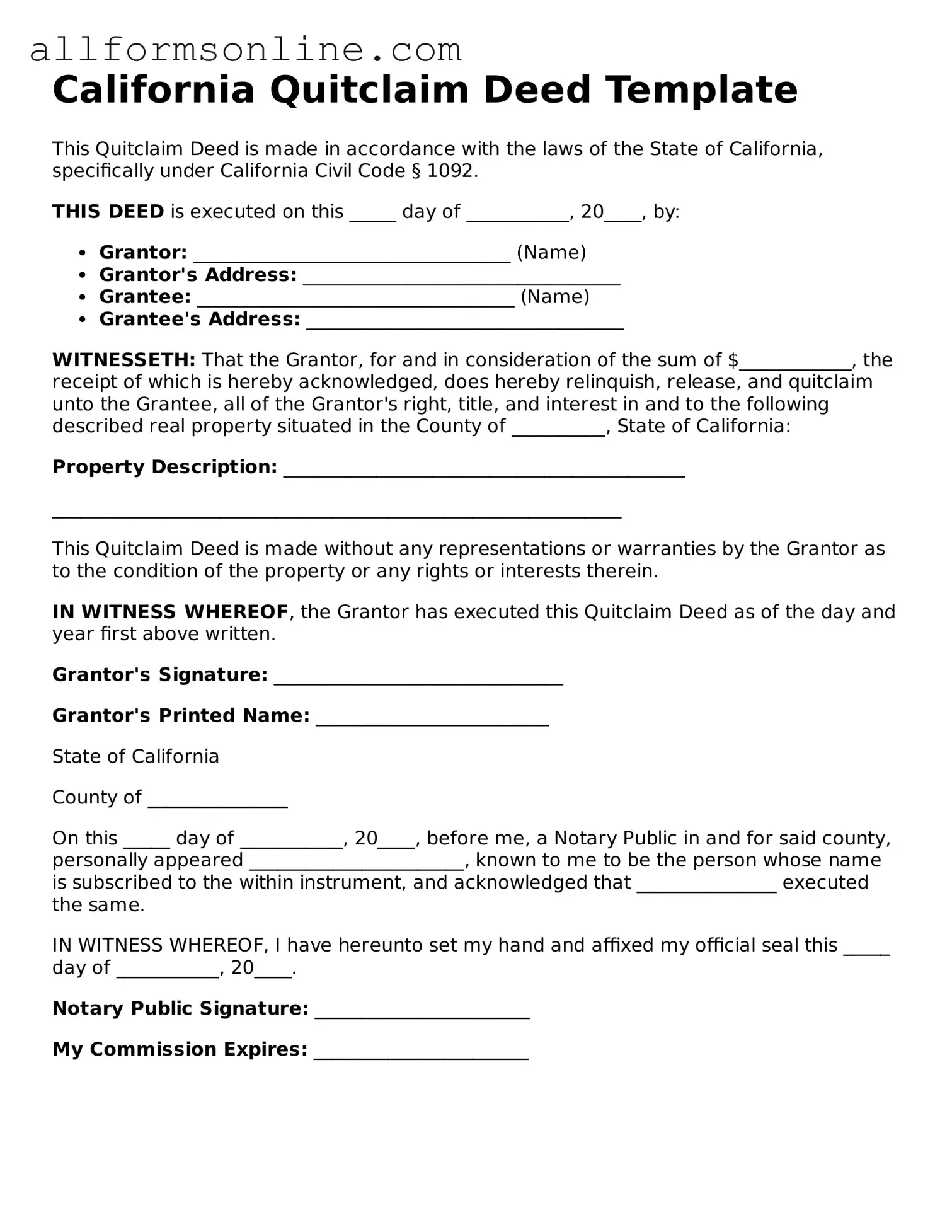What is a Quitclaim Deed?
A Quitclaim Deed is a legal document used to transfer ownership of real estate from one person to another. Unlike a warranty deed, it does not guarantee that the property is free of liens or other claims. It simply conveys whatever interest the grantor has in the property at the time of the transfer.
When should I use a Quitclaim Deed?
This type of deed is commonly used in situations where property is transferred between family members, such as in divorce settlements, gifts, or inheritance. It is also useful for clearing up title issues, such as when a co-owner wants to relinquish their interest in the property.
How do I complete a Quitclaim Deed in California?
To complete a Quitclaim Deed in California, you need to fill out the form with the necessary information, including the names of the grantor and grantee, a description of the property, and the date of the transfer. It is important to ensure that all information is accurate and complete to avoid future disputes.
Do I need to have the Quitclaim Deed notarized?
Yes, in California, a Quitclaim Deed must be notarized to be legally valid. The grantor must sign the deed in the presence of a notary public, who will then affix their seal. This step helps to verify the identity of the parties involved and ensures the document's authenticity.
Is a Quitclaim Deed the same as a Warranty Deed?
No, a Quitclaim Deed is not the same as a Warranty Deed. A Warranty Deed provides a guarantee that the grantor holds clear title to the property and has the right to sell it. In contrast, a Quitclaim Deed offers no such guarantees and only transfers whatever interest the grantor has.
What are the tax implications of using a Quitclaim Deed?
Transferring property through a Quitclaim Deed may have tax implications. In California, the transfer may be subject to documentary transfer taxes, although certain exemptions may apply, such as transfers between spouses or to a revocable trust. It is advisable to consult a tax professional to understand any potential tax consequences.
Can I revoke a Quitclaim Deed once it is executed?
Once a Quitclaim Deed is executed and recorded, it cannot be revoked unilaterally. However, the grantor can create a new deed to transfer the property back or to another party. It is essential to follow the proper legal procedures to ensure the new deed is valid.
Where do I file a Quitclaim Deed in California?
A Quitclaim Deed must be filed with the county recorder's office in the county where the property is located. Filing the deed officially records the transfer and provides public notice of the change in ownership.
What happens if I do not record the Quitclaim Deed?
If you do not record the Quitclaim Deed, the transfer of ownership may not be recognized by third parties. This can lead to complications, especially if the grantor later attempts to sell the property or if disputes arise regarding ownership. Recording the deed is crucial for protecting the rights of the grantee.
Can a Quitclaim Deed be used for commercial property?
Yes, a Quitclaim Deed can be used for both residential and commercial properties. The process and requirements remain the same regardless of the type of property being transferred. However, it is advisable to consult a legal professional for commercial transactions to ensure all aspects are properly addressed.
